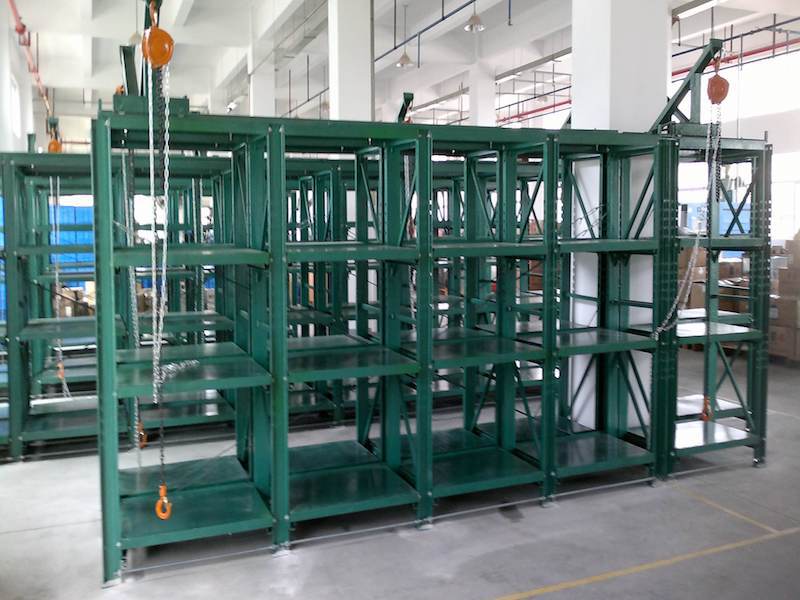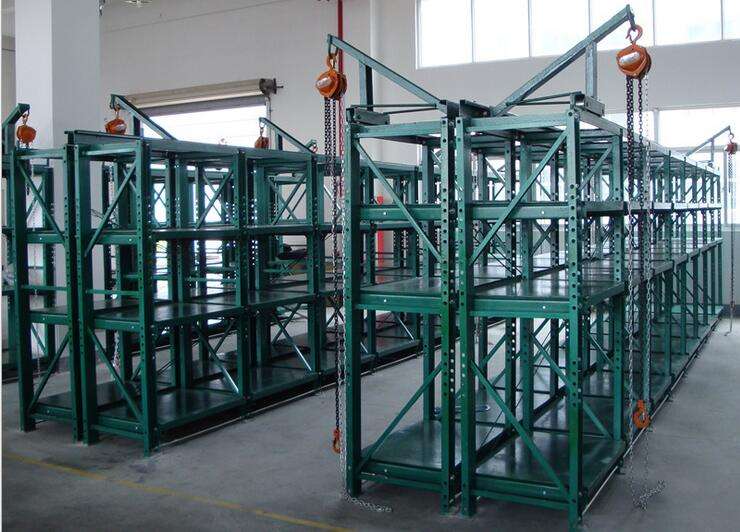Industrial racking is a crucial component in modern warehousing and storage solutions, enabling businesses to maximize space, improve efficiency, and streamline operations. Whether you're managing a small warehouse or a large distribution center, choosing the right industrial racking system can significantly impact productivity and cost-effectiveness.
In this guide, we’ll explore industrial racking in detail, covering its key types, benefits, design considerations, maintenance tips, and industry applications.

1. What Is Industrial Racking?
Industrial racking refers to structured storage systems designed to hold and organize goods in warehouses, manufacturing plants, and distribution centers. These systems are engineered to optimize vertical and horizontal space, allowing businesses to store large quantities of inventory safely and accessibly.
Unlike traditional shelving, industrial racking is built to withstand heavy loads, making it ideal for palletized goods, bulk materials, and large equipment. Common materials used in construction include steel and aluminum, ensuring durability and long-term reliability.
2. Key Types of Industrial Racking Systems
There are several types of industrial racking systems, each suited for different storage needs. Below are the most widely used configurations:
a. Selective Pallet Racking
This is the most common industrial racking system, allowing direct access to each pallet. It’s ideal for warehouses with a high variety of SKUs and frequent loading/unloading requirements.
b. Drive-In/Drive-Through Racking
Designed for high-density storage, this system allows forklifts to drive directly into the rack structure. It’s best for storing large quantities of similar products with limited SKU diversity.
c. Push Back Racking
A dynamic industrial racking solution that uses a last-in, first-out (LIFO) approach. Pallets are stored on inclined rails and pushed back by new loads, maximizing space efficiency.
d. Cantilever Racking
Perfect for storing long, bulky items like pipes, lumber, or furniture. Cantilever racks feature arms extending from vertical columns, providing unobstructed access.
e. Mobile Racking
A space-saving industrial racking system where racks are mounted on movable carriages. By compacting aisles when not in use, it increases storage capacity by up to 50%.

3. Benefits of Industrial Racking for Businesses
Investing in a high-quality industrial racking system offers numerous advantages:
a. Maximized Storage Space
By utilizing vertical space, businesses can store more inventory without expanding their facility footprint.
b. Improved Accessibility & Efficiency
Well-organized industrial racking systems reduce retrieval times, enhancing workflow and order fulfillment speed.
c. Enhanced Safety
Properly designed racks minimize the risk of collapses, falling goods, and workplace accidents. Features like load beams and safety pins add extra stability.
d. Cost-Effective Operations
Efficient storage reduces labor costs, minimizes product damage, and optimizes inventory management.
e. Scalability & Customization
Industrial racking systems can be adjusted or expanded as business needs evolve, ensuring long-term usability.
4. Important Design Considerations for Industrial Racking
Before selecting an industrial racking system, businesses must evaluate several factors:
a. Load Capacity & Weight Distribution
Understanding the weight and dimensions of stored goods ensures the racking system can handle the load without structural risks.
b. Warehouse Layout & Space Utilization
Aisle width, ceiling height, and floor space determine which industrial racking type is most efficient.
c. Forklift & Equipment Compatibility
The racking system must align with the forklifts’ reach, lift height, and maneuverability.
d. Compliance with Safety Standards
Adhering to OSHA, ANSI, or local regulations prevents legal issues and workplace hazards.
e. Future Expansion Needs
Modular designs allow for easy reconfiguration as storage demands grow.
5. Maintenance & Safety Best Practices for Industrial Racking
To ensure longevity and safety, businesses should follow these industrial racking maintenance guidelines:
a. Regular Inspections
Check for bent beams, loose bolts, or damaged components that could compromise structural integrity.
b. Proper Loading Techniques
Avoid overloading racks and ensure weight is evenly distributed to prevent collapses.
c. Employee Training
Workers should be trained on safe loading/unloading procedures and hazard recognition.
d. Immediate Repairs
Damaged components should be replaced promptly to prevent accidents.
e. Floor & Rack Alignment
Uneven flooring can cause instability, so racks must be installed on level surfaces.
6. Industrial Racking Applications Across Industries
Industrial racking is versatile and used in various sectors:
a. Retail & E-Commerce Warehousing
Facilitates efficient order picking and inventory management for fast-moving consumer goods.
b. Manufacturing & Automotive
Stores raw materials, components, and finished products in an organized manner.
c. Food & Beverage Storage
Supports bulk storage with options for temperature-controlled environments.
d. Pharmaceutical & Healthcare
Ensures safe storage of sensitive medical supplies with easy traceability.
e. Logistics & Distribution Centers
Enables high-speed loading/unloading for seamless supply chain operations.
Selecting the best industrial racking solution depends on your business’s specific storage needs, budget, and operational goals. By understanding the different types, benefits, and maintenance requirements, companies can optimize their warehouse efficiency and safety.
Whether you need high-density storage, easy accessibility, or specialized configurations, investing in the right industrial racking system will enhance productivity and support long-term growth.
If you're planning to upgrade your storage infrastructure, consult with a professional industrial racking supplier to design a customized solution tailored to your requirements.
By covering these essential aspects, this guide provides a thorough understanding of industrial racking, helping businesses make informed decisions for their storage needs.







